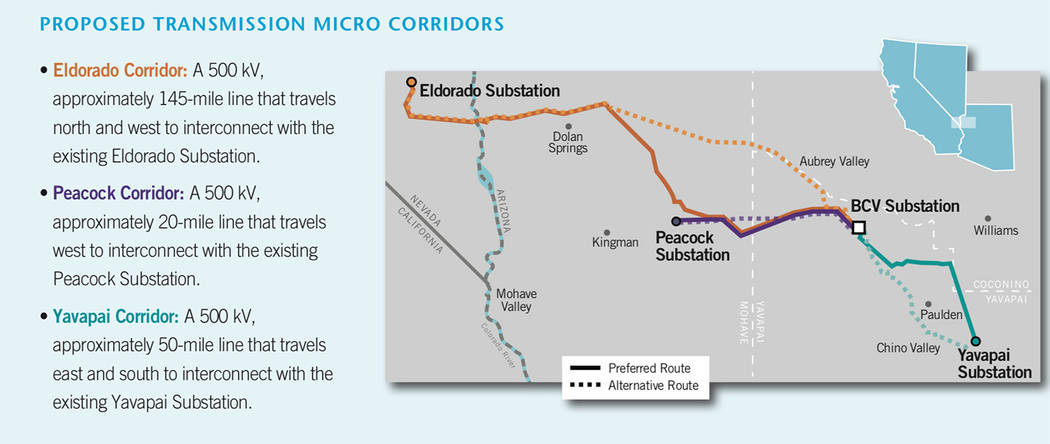
Boulder City residents got their first look Tuesday, Oct. 23, night at a proposed energy storage project that would tie into power lines at the Eldorado Substation.
ITC Holdings Corp., based in Novi, Michigan, is studying the feasibility of creating a multibillion dollar pumped energy storage project to supplement renewable energy resources in the Southwest.
The Big Chino Valley Pumped Storage Project would create two connected reservoirs about 5 miles southeast of Seligman, Arizona, that would be used to generate electricity and integrated into energy transmission grids serving Arizona, Nevada and California.
Brian Studenka, director of engineering and policy grid development for ITC, provided an overview of the project to the about 10 people who attended the stakeholder meeting. When built, the reservoirs will serve like a giant battery for energy, especially when demand is high and renewable resources are unavailable, he said.
“There is no certainty,” Studenka said about renewable sources such as solar and wind because the sun doesn’t always shine and the wind doesn’t always blow.
Water for the initial fill of the two reservoirs, about 27,000 acre feet or 8.7 billion gallons, would come from the nearby Big Chino aquifer, said Don Pool, a hydrologist consultant and former employee of the U.S. Geological Survey. It would be taken over several years to avoid adverse effects to the Verde River and the aquifer would be recharged naturally in about a year.
Power generated by the system would be transmitted through a 500 kV power line from the reservoir to the Eldorado Substation in Boulder City adjacent to existing lines, according to the proposal.
Corey Proctor, a manager with ITC, said they expect the line to be within 200 feet of existing right of ways, including where it would cross the Colorado River. The exact placement would depend on property ownership, the existence of critical species habitats and the slope of the land.
The proposed corridor to determine where the lines will be place is expected to be studied next year, said Devon Malkin, licensing manager and senior scientist with HDR Engineering.
ITC is seeking an initial 50-year license for the project from the Federal Energy Regulatory Commission, which could be extended an additional 50 years.
Boulder City resident George Rhee, who said he is in favor of the proposal, questioned ITC representatives about the costs, risks and its effect on the aquifer.
“I think storage is critical if developing solar and wind,” he said of the project itself.
Because the project is in its earliest stages, Studenka said it is unknown exactly who will partner with ITC to share development costs with the exception of Tucson Electric Power, which is a subsidiary of Fortis, ITC’s parent company.
The meetings and studies are part of the initial licensing process with FERC.
Andrew Jamieson, regulatory counsel for ITC, said they plan to submit scoping documents with FERC in December, a draft license application in September and final license application in February 2020. If approved, construction would likely begin in 2022 and continue through 2026.
Studenka, along with other representatives from the company, said the meeting was just one of several opportunities locals will have to hear of or comment about the project.
Resident Valerie McNay said she came to learn about the project because she is worried about energy and water issues. She said she found their presentation interesting.
Additional information and the opportunity to comment can be found at http://bigchinovalleypumpedstorage.com.
Hali Bernstein Saylor is editor of the Boulder City Review. She can be reached at hsaylor@bouldercityreview.com or at 702-586-9523. Follow @HalisComment on Twitter.